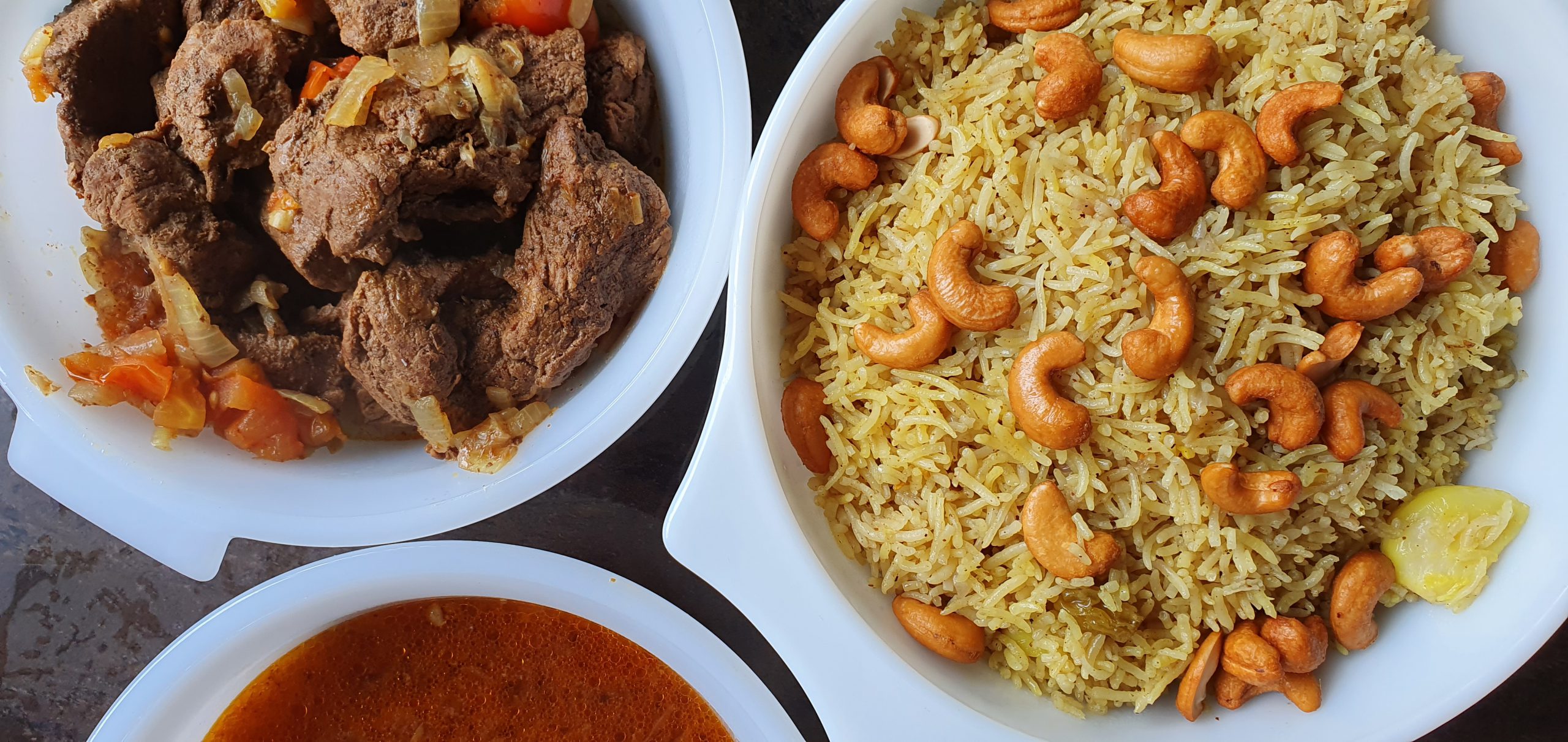I’ve been waiting for Chef Ammar’s spices and recipe book to go mainstream for a very long time, but somehow it never did. His books are not sold in any major bookstore, and his bottled spices are not sold in any major grocer or supermarket. His stuff is only sold online by seemingly home-based distributors – on Facebook, mind you – a very amateur, “Hubungi kami untuk menjadi stokis kami” kind of affair. Personally I think a chef as popular as he should totally go with the big distributors, but that’s a discussion for another day.
So I finally caved and got my hands on his cookbook and his Kabsah and Bukhari spices, and for this Hari Raya Aidiladha Kak’mbang and I decided to try something new. The original recipe this dish was based on was for lamb shank, but we modified it for the beef we bought from the market.
We served this with his Arabic Salsa (Sambal Arab). It was a real hit among guests, and was the first thing to run out. Will definitely be making this again!
Thank you Chef Ammar!
Updated on 31 Jul 2020, Hari Raya Aidiladha, with new pictures. I also used beef fat instead of olive oil, which I rendered quite recently from a few leftover tomahawk steaks. The aroma of the onions sauteeing in beef fat was seriously out of this world. Take your time with the onions, cooking them until golden brown to build the layers of flavor, something I noticed is quite common in Middle Eastern dishes.
Beef Kabsah with Basmathi Rice
Ingredients
- 2 kg beef tenderloin (daging batang pinang), cut into cubes
- 5 1/2 tablespoons Chef Ammar Kabsah Spice, or make your own Kabsah Spice Mix
- 1/4 cup olive oil OR beef fat
- 2 large onions, chopped, plus another 2 finely chopped
- 1/4 cup tomato purée
- 4 large tomatoes, chopped
- 1 tablespoon plus 2 teaspoons salt
- 4 cups long-grain basmathi rice, rinsed and soaked for 30 minutes
- 8 cloves garlic, peeled
- 6 cups water
- Beef stock cubes, enough for 1.5 liters stock
- 2 green chillies, cut in half lengthwise
- 1/4 cup ghee
- 1/2 cup raisins
- 1/2 cup toasted chopped cashew nuts
Directions
Make the Kabsah beef. Pat dry the beef cubes using paper towels. In a large bowl, season the beef cubes with 3 1/2 tablespoons of the Kabsah spice mix.

In a large pot, heat 2 tablespoons of the olive oil or beef fat over medium high heat.

Add the 2 chopped onions and cook, until soft and golden yellow in color, about 5 minutes.

Add the beef and cook until browned and golden.

Transfer the beef mixture to your pressure cooker pot. Add the tomato purée, chopped tomatoes, 1 tablespoon salt and enough water to the pot to cover the beef.

Close and lock the lid of the pressure cooker and cook, using the Beef/Mutton setting, 45 minutes.

After all the steam has been released from the pressure cooker, open the lid. Using a slotted spoon, scoop out all the meat from the broth into a separate bowl and set aside. Reserve the broth.
While the beef is cooking, make the rice. In your rice cooker pot or a large Dutch oven over high heat, heat the remaining 2 tablespoons of olive oil or beef fat.

Add the 2 finely chopped onions and garlic and cook, stirring frequently, until onions are golden, 4 to 5 minutes.

Add the remaining 2 tablespoons Kabsah spice mix and cook, stirring, 2 minutes.

Add the rice and gently stir to combine.

Add 6 cups of water, stock cubes, green chillies and remaining 2 teaspoons salt, and stir to combine.

Bring to a boil. Let cook for about 5 minutes more, stirring occasionally.

Add the raisins and give the rice a few turns.
Transfer the pot to your rice cooker to finish cooking the rice, if using. Otherwise, reduce the heat to medium and cook until rice is done, about 15 minutes more. Remove from the heat.

Add the ghee and stir until evenly coated. Let rest for 10 minutes.

Serve the rice in a large bowl or platter. Garnish with the toasted chopped cashew nuts.

Serve together with the beef and reserved gravy.


Leave a Reply